Idea by
Manuel Bouzas Barcala
Call for ideas 2020
Un Buen Suceso
Un Buen Suceso
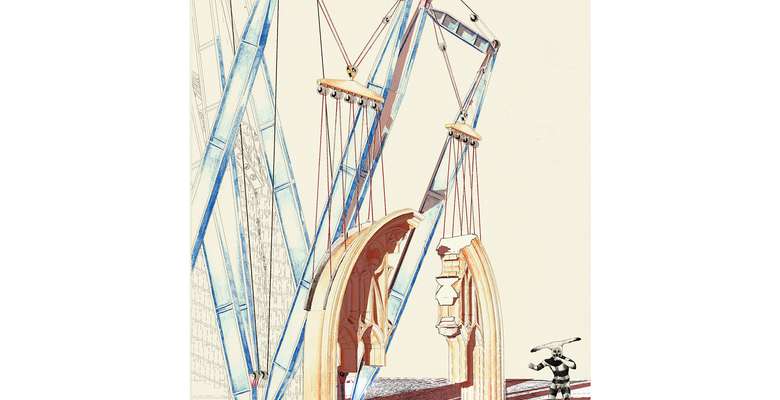
- Site-specific cases
This proposal, awarded in 7 graduation project competitions, consists of a theoretical research about the role that monumentality plays in architecture today. It begins with the discovery of the ruins of the ancient Buen Suceso Church, a building with an unfortunate and very curious past: it was demolished and rebuilt at least three times in different locations of Madrid. Six centuries later, its ruins ended up lost and forgotten far away. The project tries to offer a worthy final to this mysterious story. It is an exercise of theory and design on a blank paper, understanding and modifying the function of ornament in an architectural project, it is the key element within the structural challenge of the design: the counterweight and its equilibrium. The project is based on the result of a series of experiments carried out from balance, gravity and geometry. A proposal that does not necessarily belong to a specific place or time, understanding a graduation project as a narrative itself.
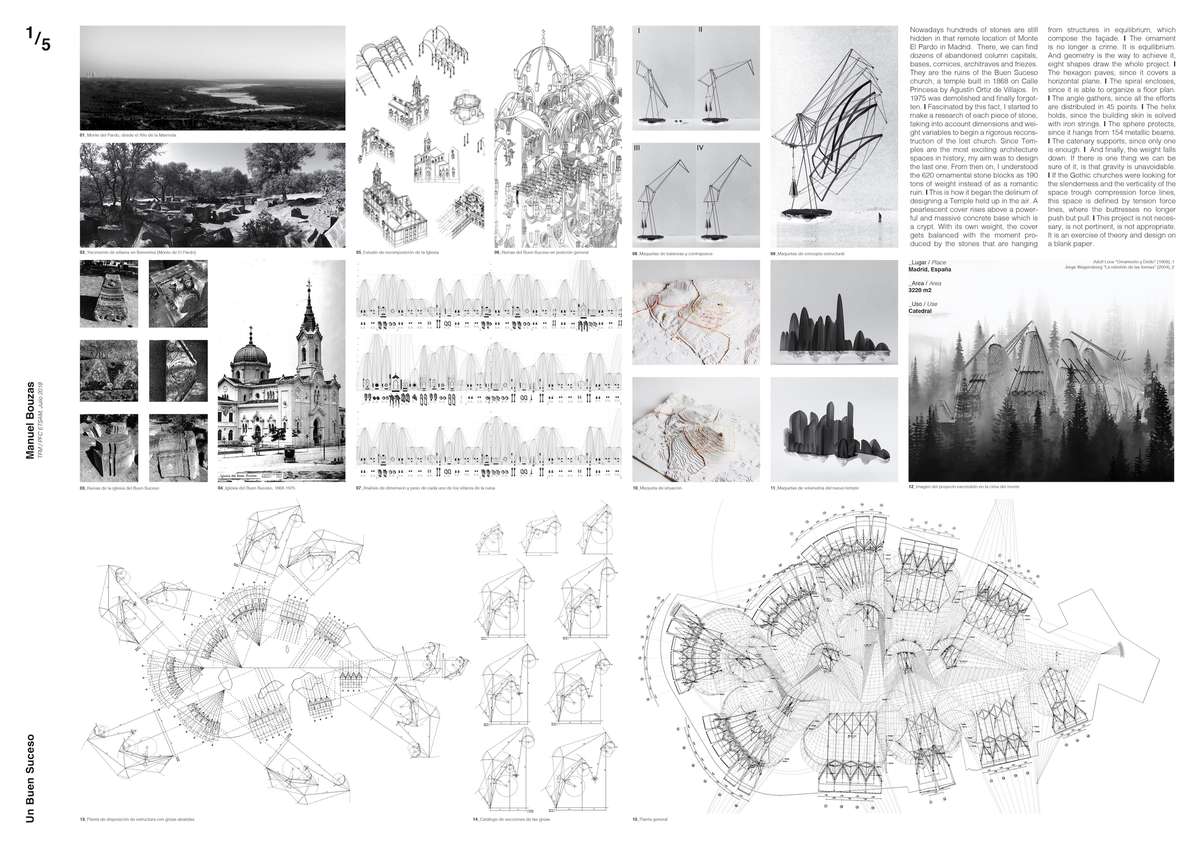
Nowadays hundreds of stones are still hidden in that remote location of Monte El Pardo in Madrid. There, we can find dozens of abandoned column capitals, bases, cornices, architraves and friezes. They are the ruins of the Buen Suceso church, a temple built in 1868 on Calle Princesa by Agustín Ortiz de Villajos. In 1975 was demolished and finally forgotten.
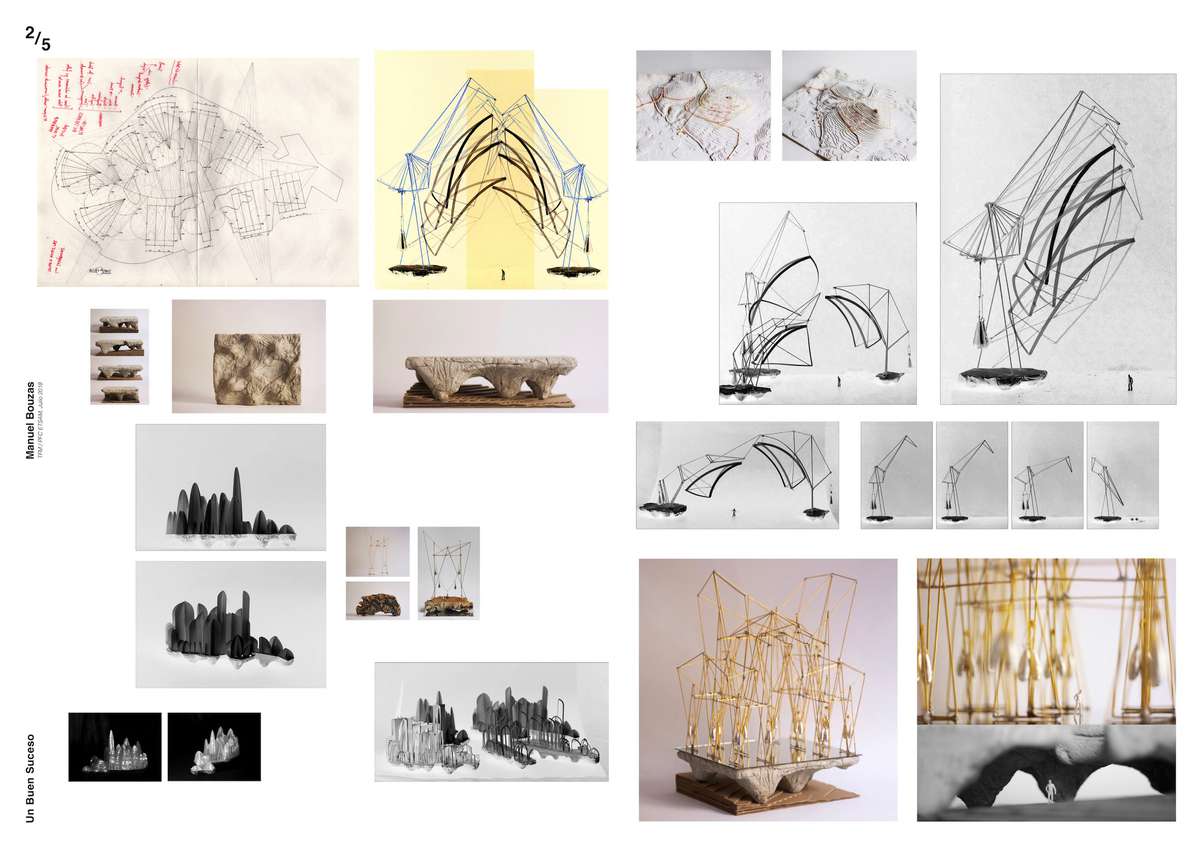
Fascinated by this fact, I started to make a research of each piece of stone, taking into account dimensions and weight variables to begin a rigorous reconstruction of the lost church. Since Temples are the most exciting architecture spaces in history, my aim was to design the last one. From then on, I understood the 620 ornamental stone blocks as 190 tons of weight instead of as a romantic ruin.
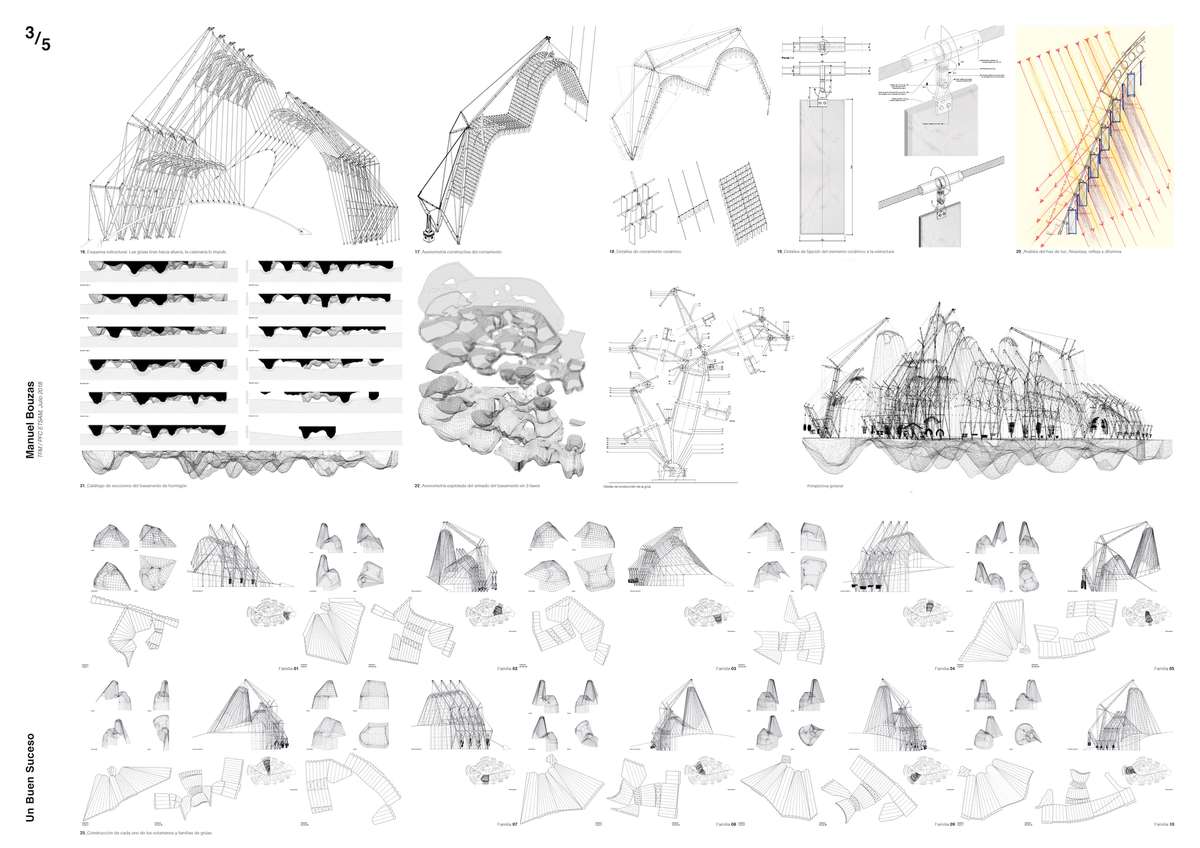
This is how it began the delirium of designing a Temple held up in the air. A pearlescent cover rises above a powerful and massive concrete base which is a crypt. With its own weight, the cover gets balanced with the moment produced by the stones that are hanging from structures in equilibrium, which compose the façade.
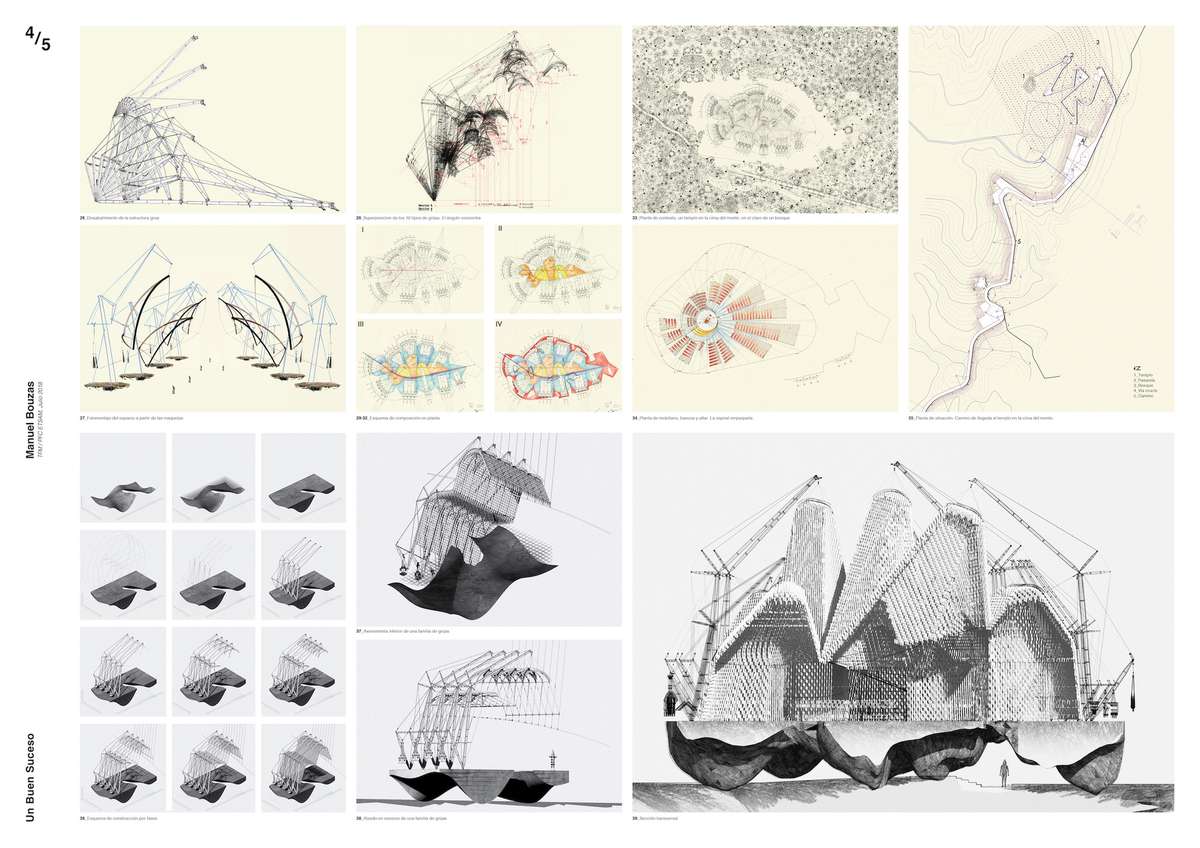
If the Gothic churches were looking for the slenderness and the verticality of the space trough compression force lines, this space is defined by tension force lines, where the buttresses no longer push but pull. The ornament is not a crime, It is equilibrium. And geometry is the way to achieve it, eight concepts draw the whole project.
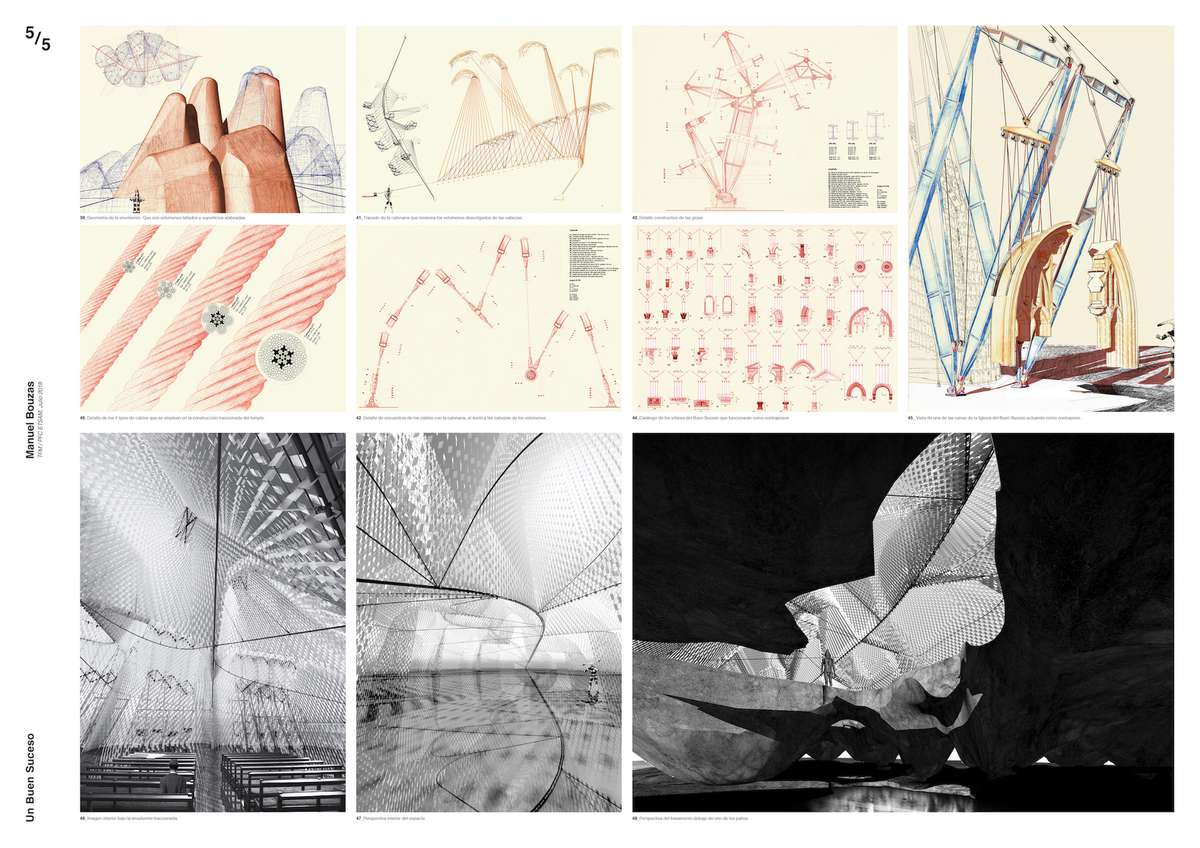
The Hexagon paves, since it covers a horizontal plane
The Spiral encloses, since it is able to organize a floor plan
The Angle gathers, since all the efforts are distributed in 45 points
The Helix holds, since the building skin is solved with iron strings
The Sphere protects, since it hangs from 154 metallic beams
The Fractal colonize, since one detail is able to cover it
The Catenary supports, since only one is enough
The Weight falls down, since the gravity is unavoidable
Un Buen Suceso
Un Buen Suceso

- Site-specific cases
This proposal, awarded in 7 graduation project competitions, consists of a theoretical research about the role that monumentality plays in architecture today. It begins with the discovery of the ruins of the ancient Buen Suceso Church, a building with an unfortunate and very curious past: it was demolished and rebuilt at least three times in different locations of Madrid. Six centuries later, its ruins ended up lost and forgotten far away. The project tries to offer a worthy final to this mysterious story. It is an exercise of theory and design on a blank paper, understanding and modifying the function of ornament in an architectural project, it is the key element within the structural challenge of the design: the counterweight and its equilibrium. The project is based on the result of a series of experiments carried out from balance, gravity and geometry. A proposal that does not necessarily belong to a specific place or time, understanding a graduation project as a narrative itself.
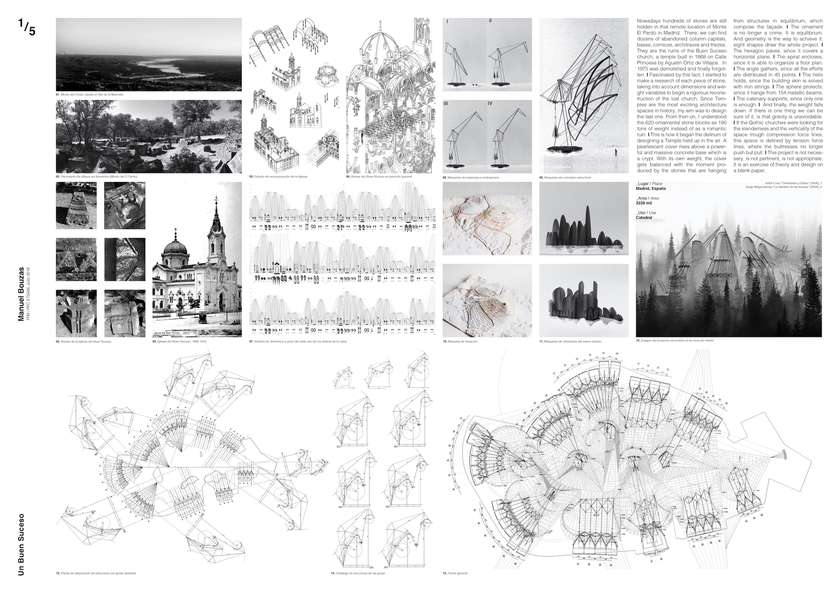
Nowadays hundreds of stones are still hidden in that remote location of Monte El Pardo in Madrid. There, we can find dozens of abandoned column capitals, bases, cornices, architraves and friezes. They are the ruins of the Buen Suceso church, a temple built in 1868 on Calle Princesa by Agustín Ortiz de Villajos. In 1975 was demolished and finally forgotten.

Fascinated by this fact, I started to make a research of each piece of stone, taking into account dimensions and weight variables to begin a rigorous reconstruction of the lost church. Since Temples are the most exciting architecture spaces in history, my aim was to design the last one. From then on, I understood the 620 ornamental stone blocks as 190 tons of weight instead of as a romantic ruin.
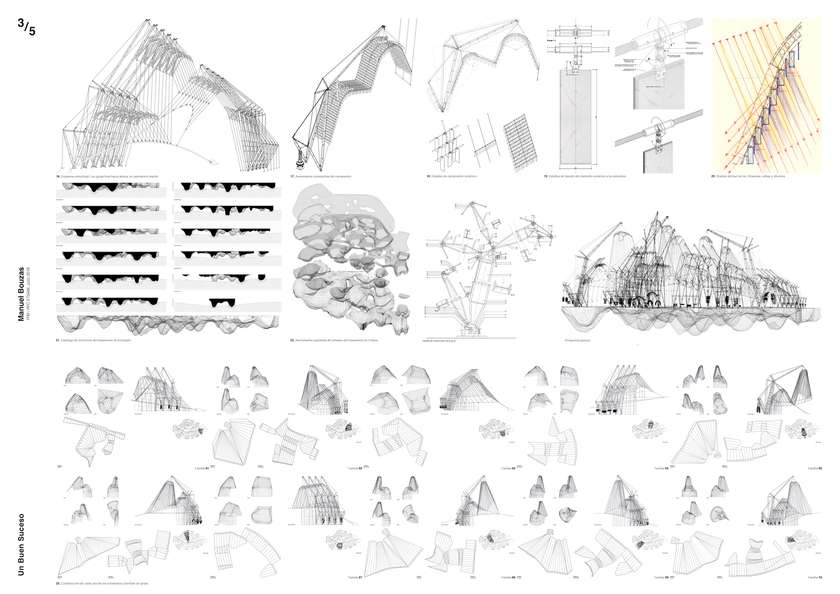
This is how it began the delirium of designing a Temple held up in the air. A pearlescent cover rises above a powerful and massive concrete base which is a crypt. With its own weight, the cover gets balanced with the moment produced by the stones that are hanging from structures in equilibrium, which compose the façade.

If the Gothic churches were looking for the slenderness and the verticality of the space trough compression force lines, this space is defined by tension force lines, where the buttresses no longer push but pull. The ornament is not a crime, It is equilibrium. And geometry is the way to achieve it, eight concepts draw the whole project.
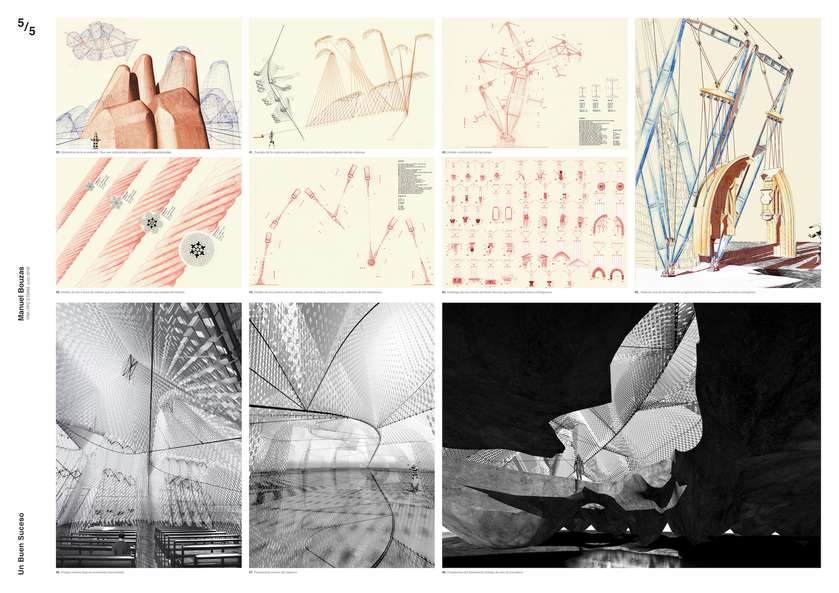
The Hexagon paves, since it covers a horizontal plane
The Spiral encloses, since it is able to organize a floor plan
The Angle gathers, since all the efforts are distributed in 45 points
The Helix holds, since the building skin is solved with iron strings
The Sphere protects, since it hangs from 154 metallic beams
The Fractal colonize, since one detail is able to cover it
The Catenary supports, since only one is enough
The Weight falls down, since the gravity is unavoidable